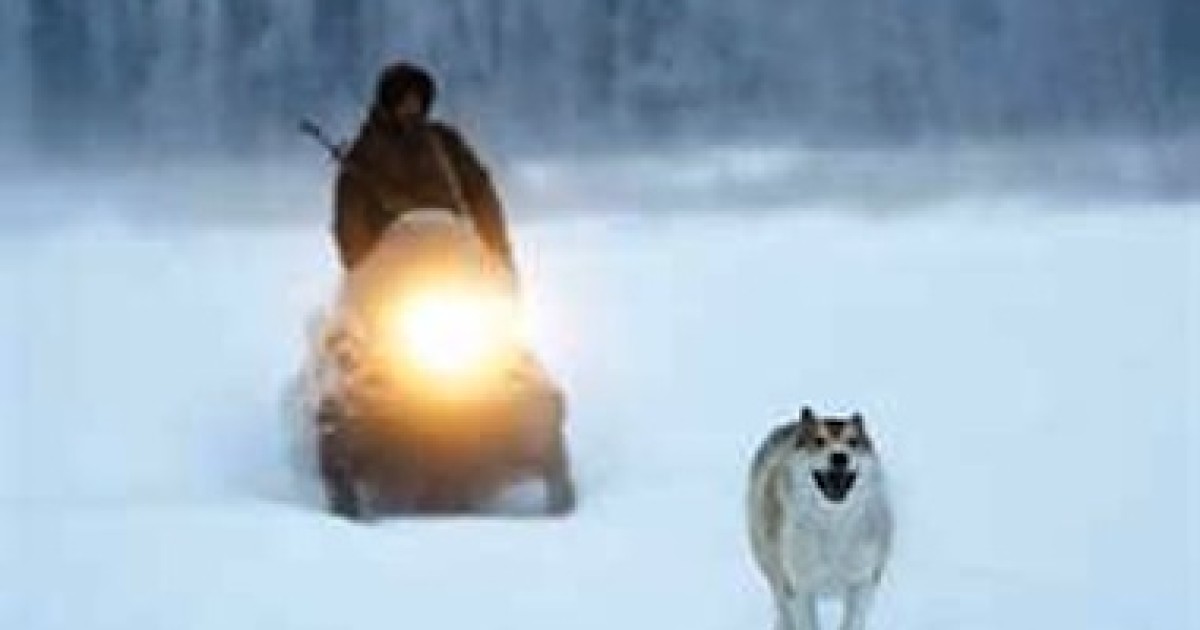By Chlotrudis Independent Film Society
Rating: 4.25 cats
Director: Dmitry Vasyukov | Werner Herzog

Country: germany
Year: 2013
Running time: 90
IMDB: http://www.imdb.com/title/tt1683876/combined
Jason says: “Werner Herzog is the name that will (and should) draw people to HAPPY PEOPLE: A YEAR IN THE TAIGA, although it’s likely that the other credited director, Dmitry Vasyukov, actually spent more time in Siberia gathering footage. However the labor is divided, the documentary still has Herzog’s voice – both literally and in terms of being an exploration of a far-off place for the curious.
“That far-off place is the village of Bakhta, Russia, situated on the Yenisei River in the middle of the Siberian taiga (a relatively barren, mostly coniferous forest), itself larger than the United States and frozen for most of the year. It is so remote that it can only be reached by helicopter or boat (and the latter only during the summer), and is primarily supported by fur trapping. Though the actual trapping mainly takes place during the winter, the preparation is a year-round process.
“Our main guide is Gennady, who has been working his territory of over a hundred square kilometers since 1970 and favors the traditional koolyomka, a deadfall trap that has the advantage of not leaving bloodstains on a sable’s pelt. He is in many ways the ideal subject for the filmmakers, with a weathered face and a crusty pragmatism that goes well beyond no-nonsense, although not so far as hostility to the filmmakers or audience. He’s a good teacher, and the personality that comes out when the camera crew offers him an unusual respite from his winter solitude both makes him more human and shows him as well-suited to this life.
“A handful of other trappers, villagers, and Khet natives fill in what the time spent with Gennady cannot reveal, and of course there’s Herzog’s distinctive narration. It is an educational experience, seemingly more focused on how things are built and maintained or the details of the environment; Vasyukov and Herzog spend little if any time on the ethics of killing animals for their coats in the modern day or how changes in the outside world may affect this village, these people, and their way of life. Side-stories on an ancient World War II veteran or how much of the Khet’s language and tradition are dying out are there to inspire further investigation for the curious, but do not lead to praise or condemnation. Indeed, the filmmakers almost tease the audience with their own expectations of advocacy, using the same level tone of voice to describe how many techniques have been the same for hundreds of years and for how the people have adopted the chainsaw and snowmobile. Scenes toward the end describing how Gennady’s fellow trapper Anatoly treats his dogs may reflect bad treatment or the animals’ ruggedness, and it’s up to the audience to ponder that a bit.
“The dogs are an important part of HAPPY PEOPLE; not only does Gennady spend a fair amount of time discussing their breeding, training, and what sort of relationship is proper with working animals, but they are also something almost any viewer can connect to immediately. Herzog and Vasyukov are not above putting adorable puppies on-screen to draw the audience in; while almost everything in the film may be unfamiliar to the urban North American, we get dogs and can relate everything else to that.
“Vasyukov, Herzong, and their multiple cinematographers (including one of the trappers who happens to be a relation of Andrey Tarkovskiy) move the cameras to capturing the landscape, and it impressive. While the images can sometimes be rough enough that I suspect much was shot on consumer video cameras, the images can be striking, with plenty of unblemished white, or unobstructed views of human-scale work that is still kind of amazing. And then, on occasion, they’ll get a shot like when enough of the river ice melts for the whole surface to start moving like a conveyor belt.
“If there’s a lesson or idea to be imparted, it’s that having a place in the world like Gennady and the like do is not cause for celebration or sadness at its modesty; that would be at odds with the perfection of the fit. HAPPY PEOPLE likely won’t (and shouldn’t) inspire anybody to become a Siberian trapper, but inspiring and feeding curiosity is worthwhile on its own. 4.25 cats
“Seen 18 February 2013 in Landmark Kendall Square #8 (first-run, 2K digital)”
